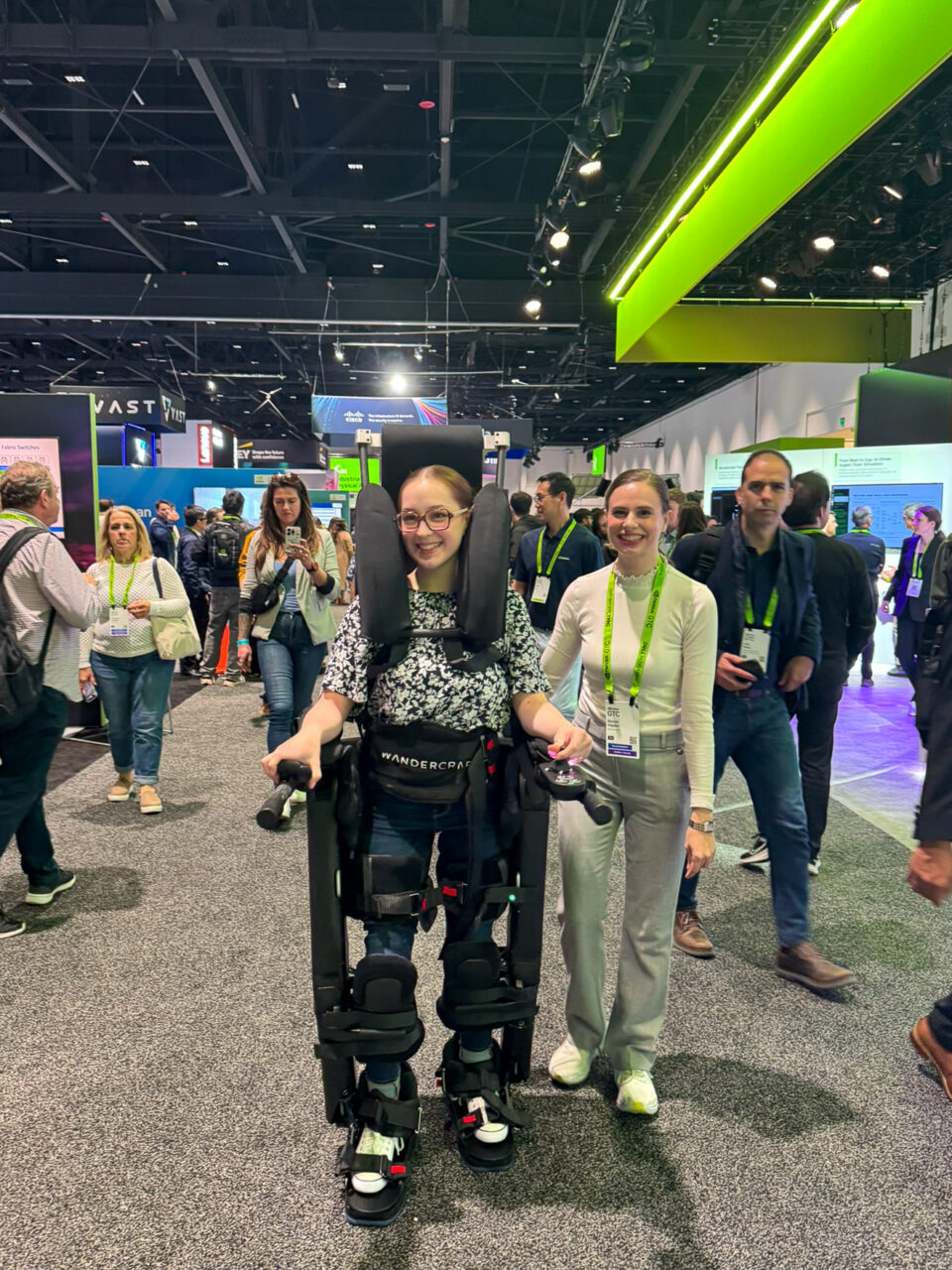Wandercraft Begins Clinical Trials for Physical AI-Powered Personal Exoskeleton

[ad_1]
For Nicolas Simon, advancing the field of robotics is a personal mission that could change his siblings’ lives.
Two-thirds of Simon’s family members use wheelchairs due to mobility challenges related to Charcot-Marie-Tooth disease, an inherited genetic condition. As an engineering student and robotics club chair at France’s École Polytechnique, he saw the opportunity to build a new device that could help his brother and other relatives walk again.
His robotics startup, Wandercraft, builds mobility solutions for individuals with spinal cord injuries, stroke and other neuromuscular disorders — with the potential to support the estimated 80 million individuals worldwide who require wheelchairs for mobility.
The company’s Personal Exoskeleton, currently in clinical trials, enables users to stand and walk with the support of AI-powered mechanisms for stability and movement. Users can control the robotic system with a joystick.
Simon founded the company in 2012 with Matthieu Masselin and Jean-Louis Constanza, whose son also has Charcot-Marie-Tooth disease. The team is accelerating its workflows with NVIDIA technologies — enabling Wandercraft to harness the latest simulation tools and AI infrastructure to bring new capabilities to its exoskeletons.
“It’s essential for the exoskeleton to be fast enough that it can be used in the real world,” said Simon. “By integrating NVIDIA AI into the device, we can someday enable users to walk at an average pace, cross the road and go up and down stairs.”
Advancing Development With Physical AI
Wandercraft’s first exoskeleton, called Atalante X, is FDA-cleared and already in use as a neurological rehabilitation tool in over 100 clinical and research settings worldwide, with patients taking over one million steps per month. Approved for use in the European Union in 2019 and in the U.S. in 2022, the device has helped hundreds of patients regain mobility through physiotherapy.
The startup’s latest device, the Personal Exoskeleton, is aimed at everyday indoor and outdoor use. With clinical trials underway in New York and New Jersey, the Personal Exoskeleton integrates AI to continuously adapt to a user’s movements in real time, supporting smooth and stable walking across different surfaces, including concrete, carpet and tile.
“It’s very important for us to use physical AI to deliver a better device and a better experience for our users, so they can move through their daily lives smoothly and efficiently,” Simon said.

In addition to helping users gain new levels of mobility at home and in their communities, the Personal Exoskeleton could also help reduce the health impacts of being seated all day — which include increased risk of cardiovascular, skin and digestive conditions.
Wandercraft is currently experimenting with NVIDIA Isaac Sim — a reference application built on NVIDIA Omniverse for simulating and testing AI-driven robotics solutions in physically based virtual environments — to accelerate its reinforcement learning pipeline. The company is also investigating the use of the NVIDIA Isaac for Healthcare developer framework for AI healthcare robotics and NVIDIA Jetson Thor, an on-robot edge computer built on the NVIDIA Blackwell architecture.
With these systems for physical AI training, simulation and runtime in place, Wandercraft will have a three-computer solution for its robotics development.
“The technology is there — you just have to build the device,” Simon said. “We take all the technology from the field of humanoid robotics, and we apply it to our exoskeleton. So now, the possibilities are endless.”
At the NVIDIA GTC global AI conference in March, Wandercraft demonstrated the prototype Personal Exoskeleton with the help of Caroline Laubach, a spinal stroke survivor and full-time wheelchair user. The exoskeleton system was also featured in last year’s Olympic and Paralympic Torch Relay.
Wandercraft aims to apply for FDA clearance for its Personal Exoskeleton immediately following completion of its clinical trial, with the goal of making it accessible to millions of wheelchair users in the U.S. with expected Medicare coverage. The company is currently recruiting additional participants for the clinical trial, which it aims to complete this year.
“With this technology, we can enable people to move around and access the environment of the city,” Simon said. “My hope is to see my device in the streets — of New York at first, but in every city in the U.S.”
[ad_2]
Source link









